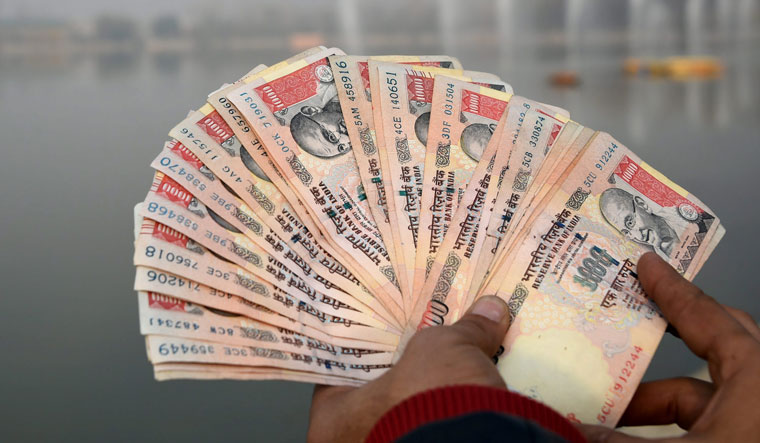The government today said demonetisation has achieved the objectives "quite substantially" as it helped curb black money flows, even as the RBI data showed that 99.3 per cent of junked notes came back to the banking system.
Economic Affairs Secretary Subhash Chandra Garg said demonetisation was was able to curb terrorist financing and promote digital payments. Now, the system now has about Rs 3-4 lakh crore less currency than it would have been if the system would have continued in the old manner, he said here.
On November 8, 2016, the government cancelled the legal validity of old Rs 500 and 2,000 notes.
"We have said in the past also I think demonetisation has achieved its objectives quite substantially," Garg said here.
When asked to elaborate on the objectives achieved, he said, "I don't want to give a lecture on that".
Following the note ban, Garg said not a single incident of high quality fake note has been detected in the system in the last one year and ten months.
On whether the objective of reducing black money was achieved, he replied in the affirmative.
"Yes... black money is not entirely cash. It is one of the components of holding the black money. It is a much wider subject. It is in the form of real estate, gold and many other ways," he noted.
According to Garg, the RBI in its last annual report had noted that most of the junked notes were being counted and about Rs 16,000 crore of Specified Bank Notes (SBNs) were not received.
"Now, they have completed the entire process, all the notes, which have been received have been counted and they have been disposed off. And the final account has come up. It is that about Rs 10,000-odd crore of notes have not come back," he said.
There are some amount of small notes still stuck in court processes as well as those with law enforcement agencies but amount involved in all this are very small.
As per the RBI's annual report released today, as much as 99.3 per cent of the junked Rs 500 and Rs 1,000 notes have returned to the banking system.
On November 8, 2016, Prime Minister Narendra Modi had announced the demonetisation of high-value currency notes.
Of the Rs 15.41 lakh crore worth Rs 500 and Rs 1,000 notes in circulation on November 8, 2016, when the note ban was announced, notes worth Rs 15.31 lakh crore have been returned.
This meant just Rs 10,720 crore of the junked currency did not return to the banking system.
Asked if government has reached some agreement with Nepal and Bhutan for exchange of SBNs, Garg said some notes are with people in these two countries but the amount is not significant.
Although no final decision has been taken, the probability for exchange is very low, he added.
"The perception that lot of people may be holding banned currency notes outside India is not correct. The non-citizen have no right to hold it in first place... therefore there is no legal provision to take it back. It is now illegal to hold it," he said.
Asked about cost of printing notes, Garg said RBI normally incurs expenses to the tune of Rs 4,000 to 5,000 crore.
"Last year, it was Rs 8,000 crore. It does happen. It depends on volume of currency you print," he added.
On whether there is cash crunch, Garg said there was no crisis anywhere in the country now.
"This was a temporary problem which was witness in February, March. It is gone past, that problem does not exist any longer.
"If you see the currency pattern, this year also it is no different. In the month of July and August some currency has come back to the system. So there is no net addition in last two months," he said.

